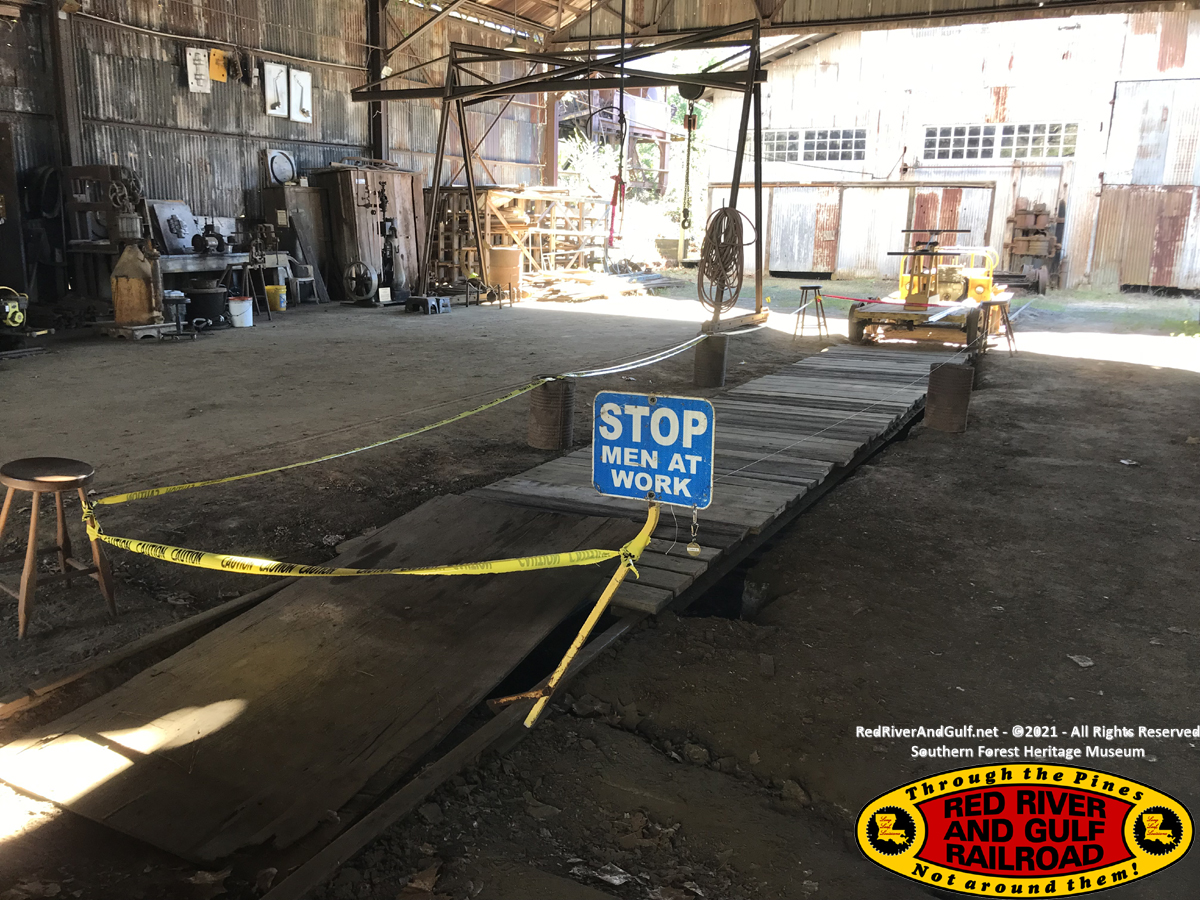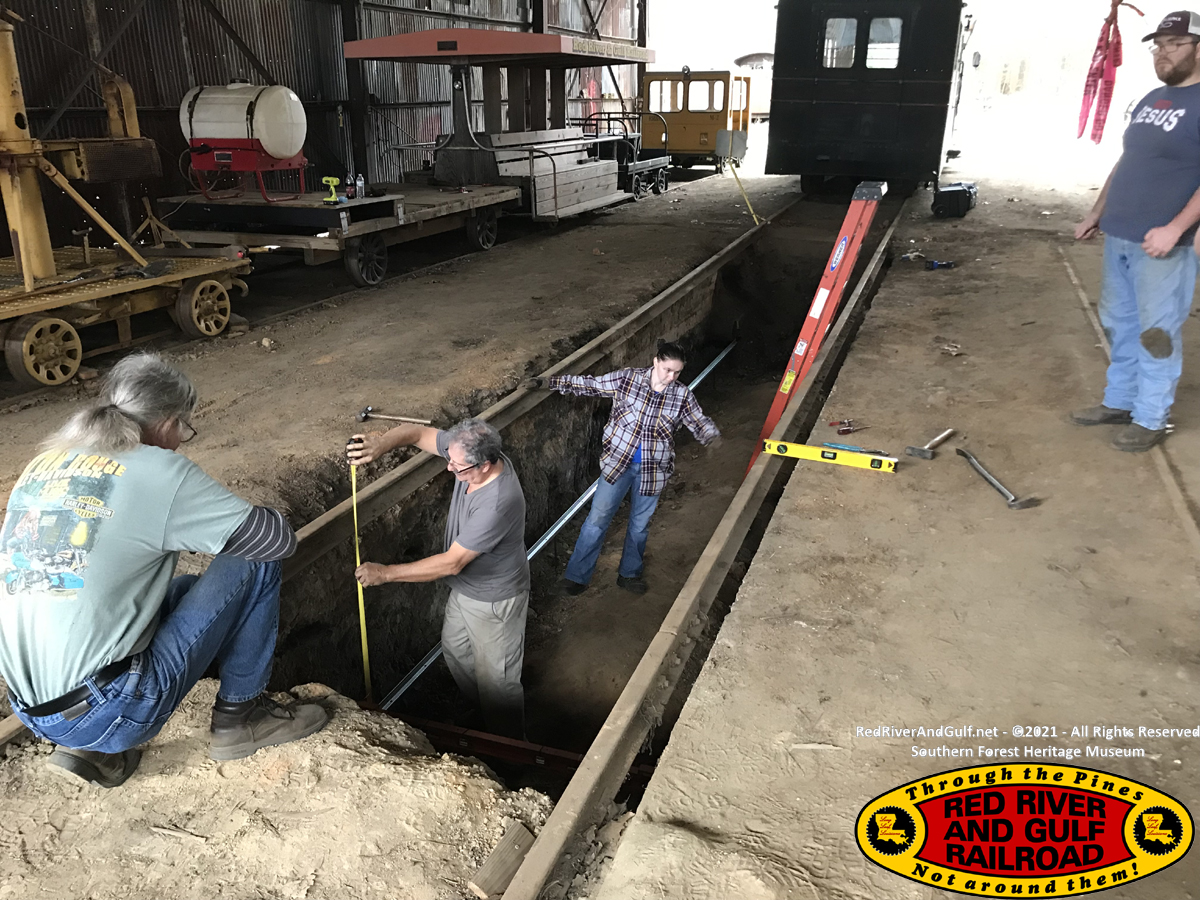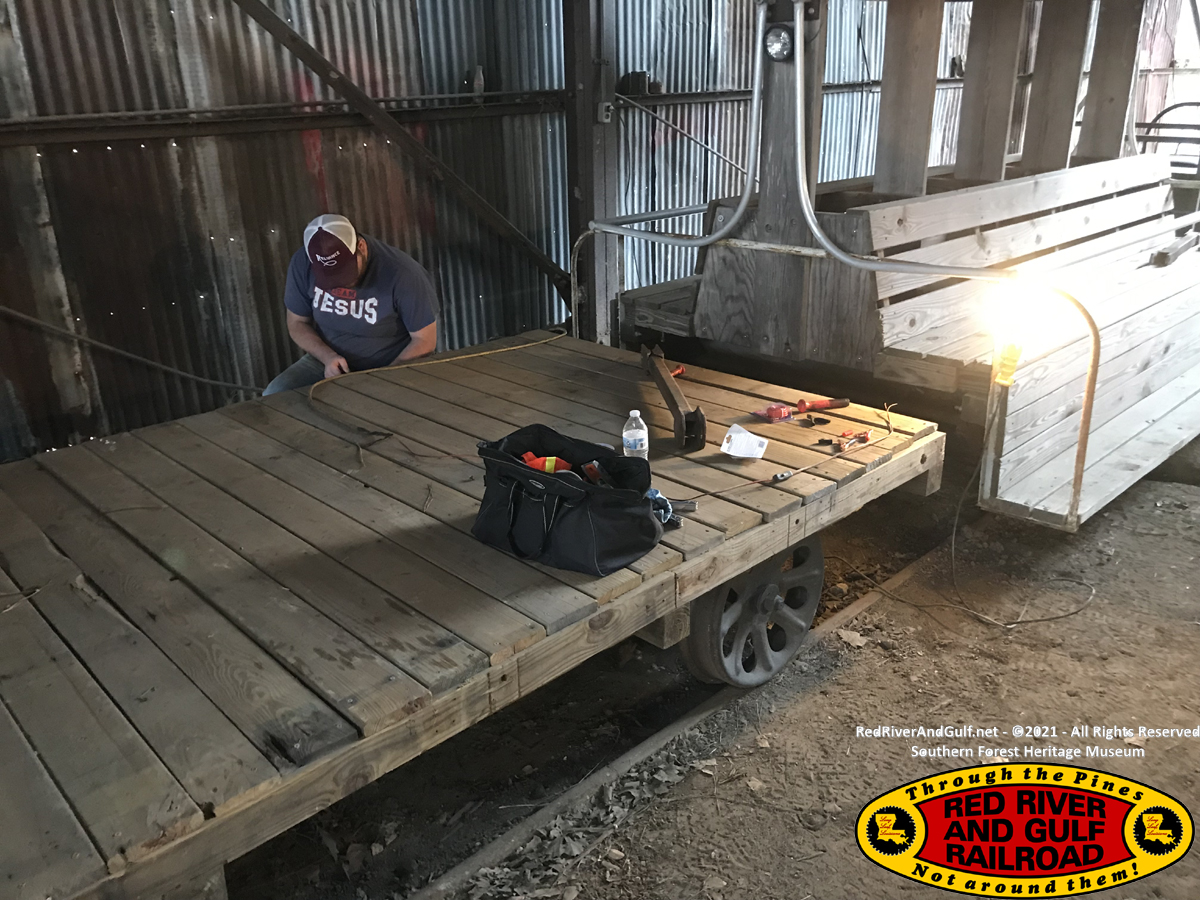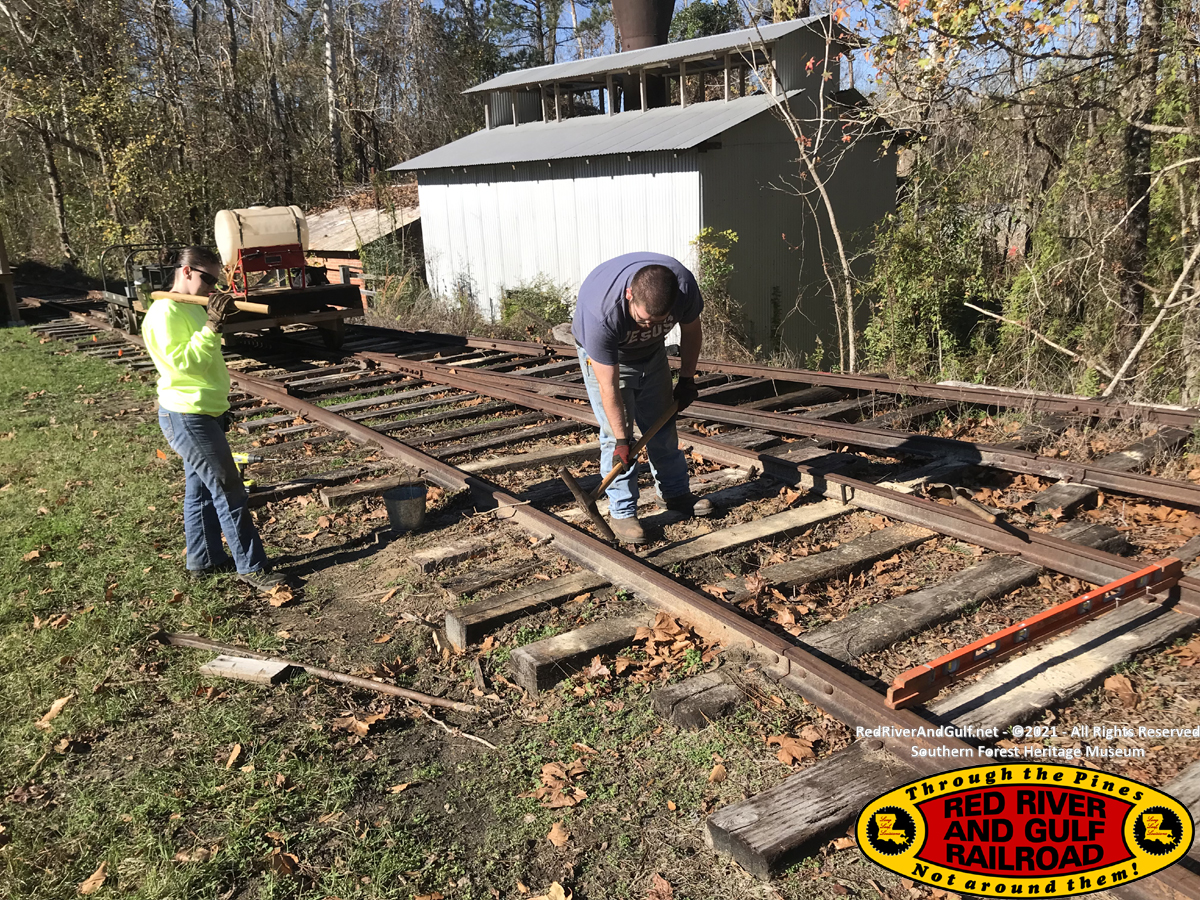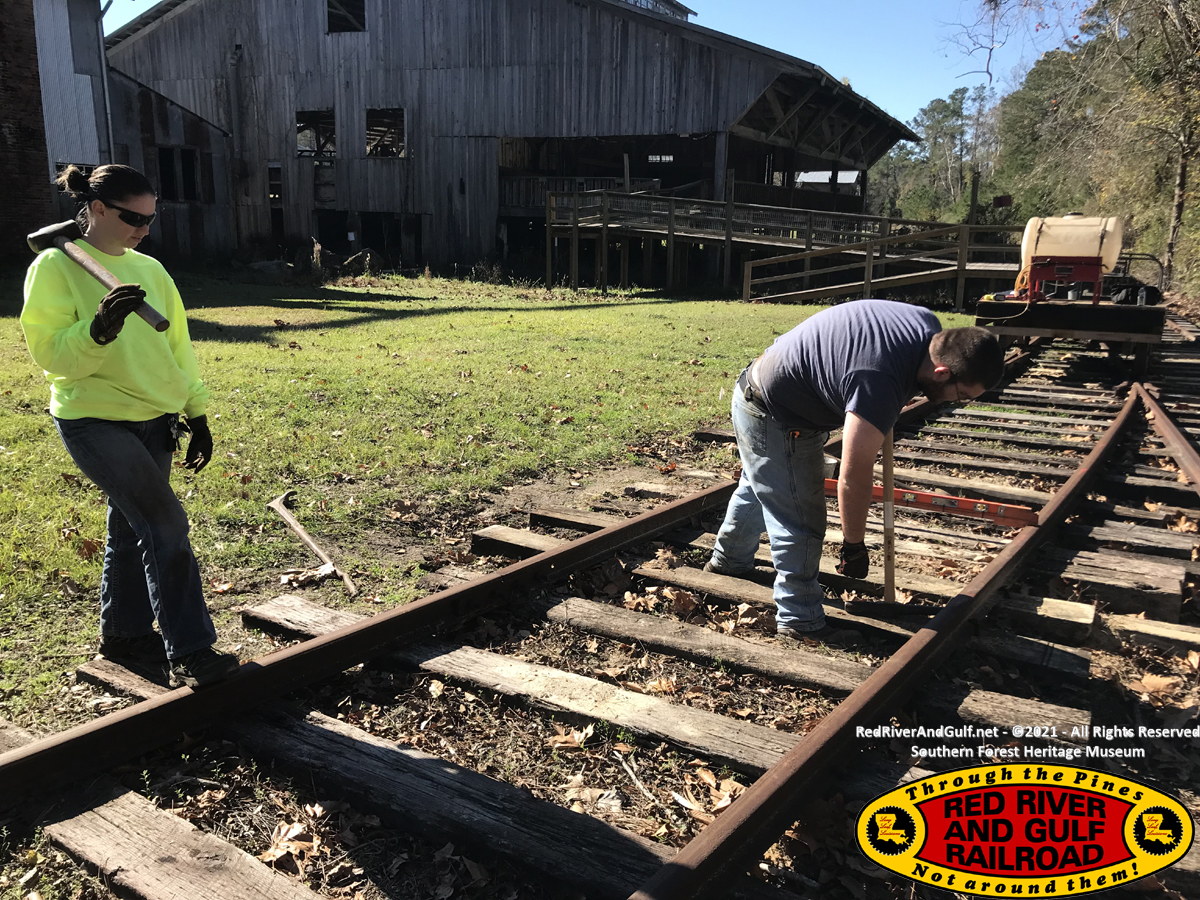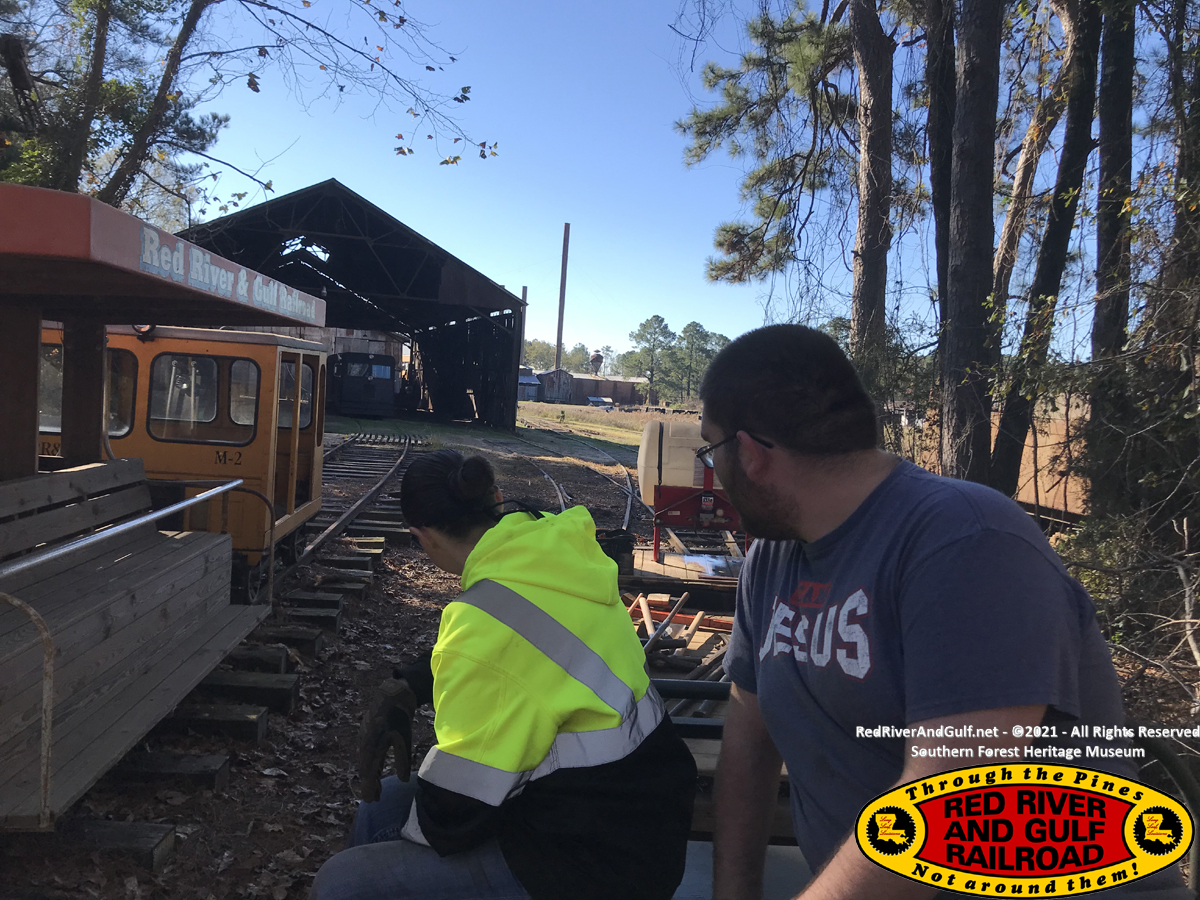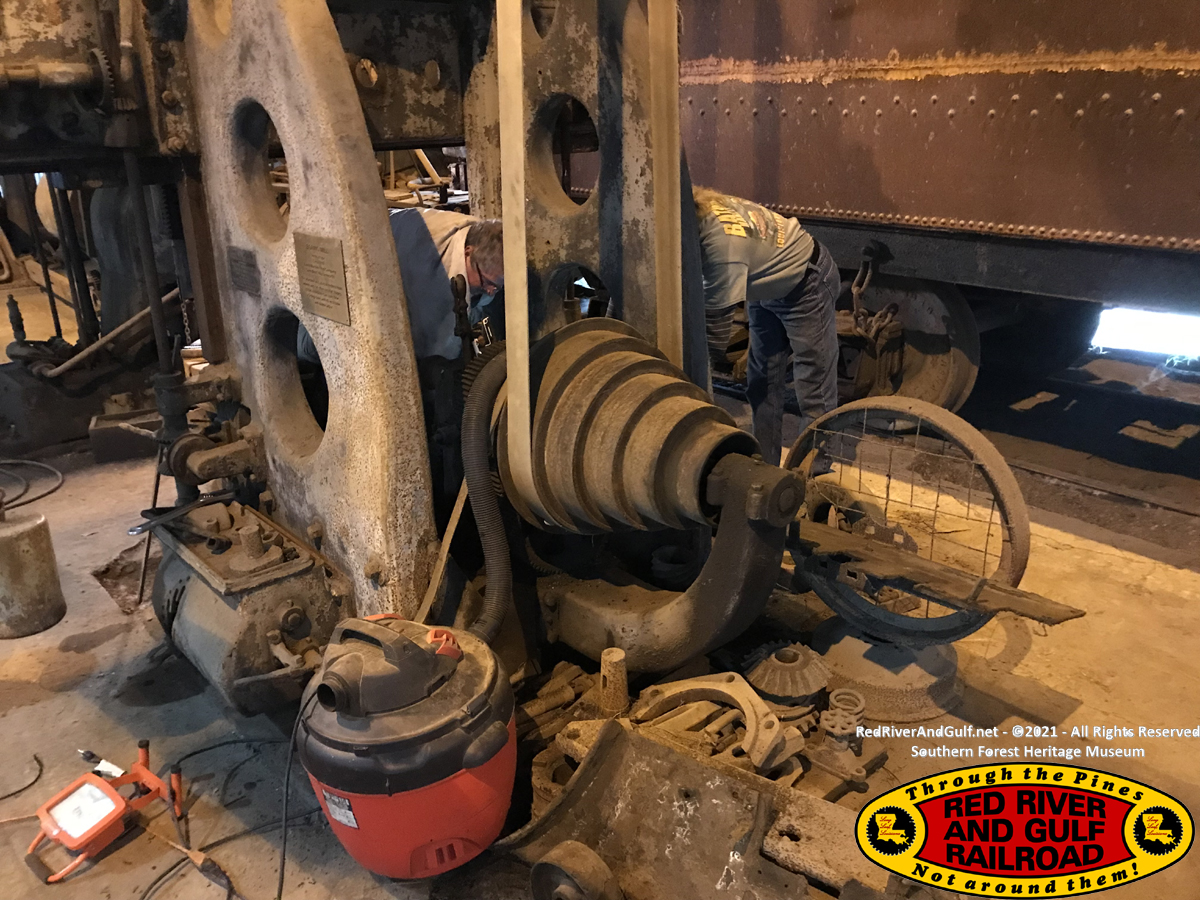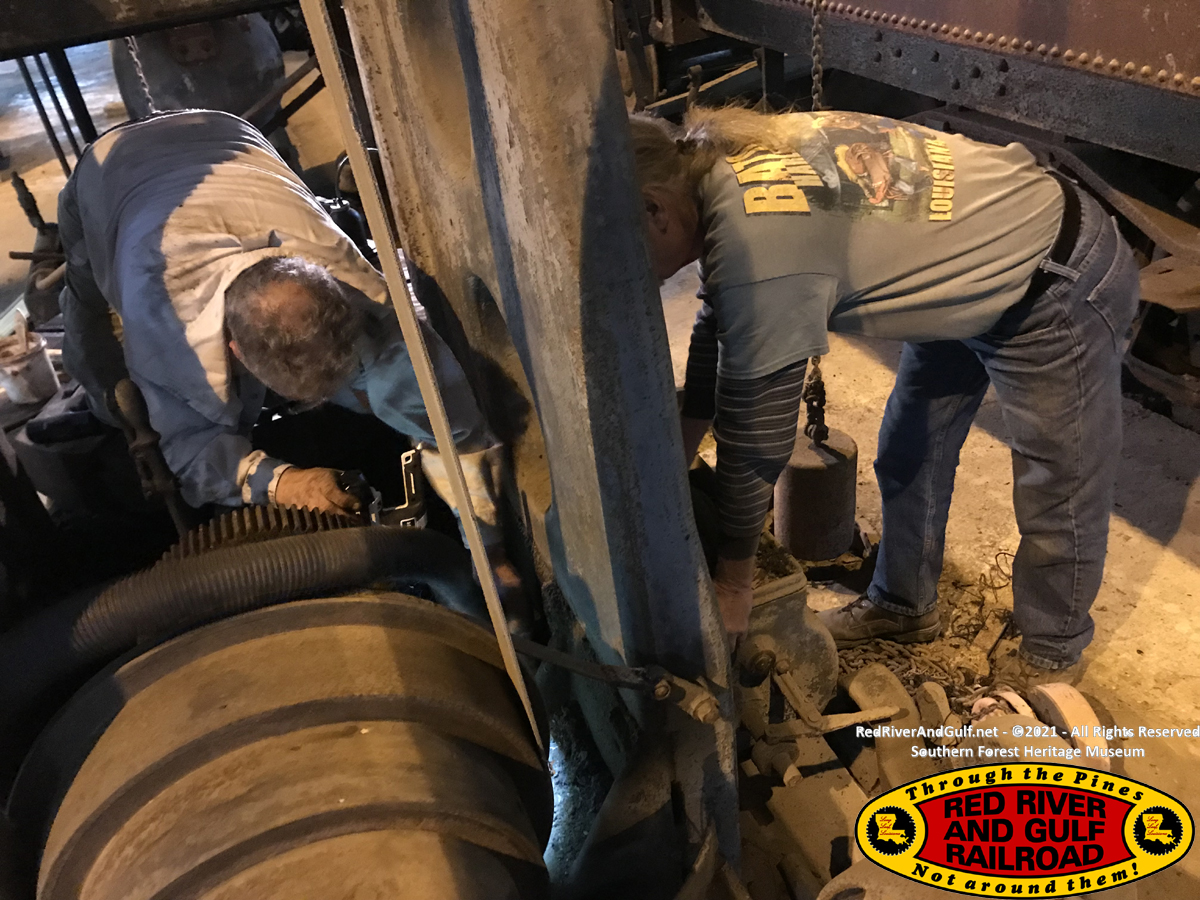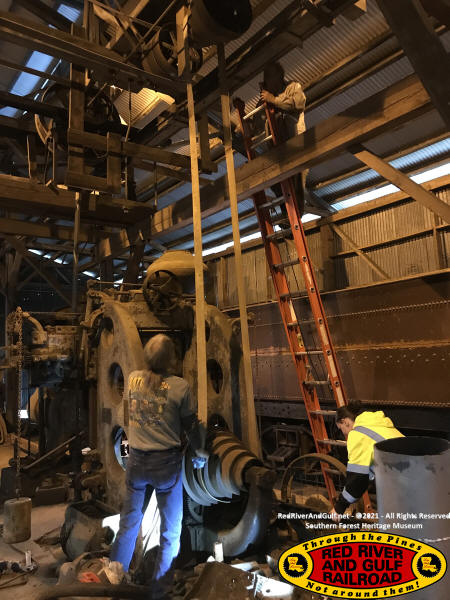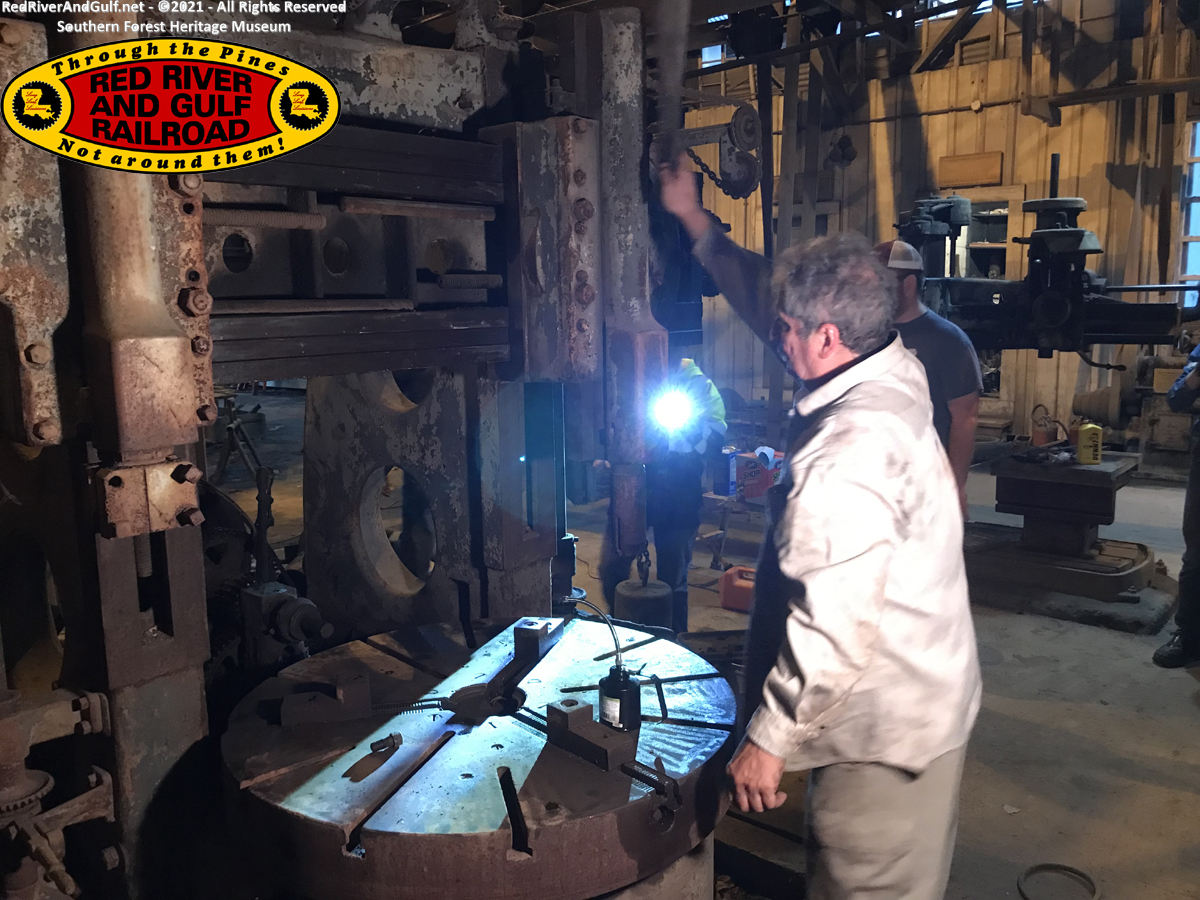|
Volunteer
Railroaders:
Mike M
Mike B
David H.
Glen
Wimbley
Andrew
Angela
Tucker
Accomplishments
- Metal keyways and stakes installed
in drop pit - now ready to pour concrete
- Herbicide sprayer car repaired, tested, and returned to service
- Vertical boring mill free up and made operational
- Main Loop track inspected
- More ties leveled up, gauged, and spiked down
Before the Weekend
We'd like to recognize that folks
have been hard at work lately on the Heisler. David and Mike M. worked
on it Saturday, December 4th, MB and Mike spent Wednesday and Thursday
on it, and David came back on Friday December 10th to work with Mike M.
on the locomotive. The work has focused on the smokebox removing the
bolts that hold the boiler to the locomotive frame. All this work was
done in preparation of removing the boiler from the locomotive.
Saturday
Saturday's first goal was to
install metal keyways and stakes in the drop pit. Once the concrete is
poured, the keyways are used to level and move the scree at the top of
concrete. This was the last project before the concrete pour. The first
task was shuffling the rail equipment over to Engine House lead track #1
or behind the pit. The recently repaired M2 (Thank you to David Hearne!)
was moved to track #1 and the drop pit covers were removed. After some
measurements and calculations, the metal stakes needed to be longer to
have the keyways at the right height. We rounded up some rebar and Mike
welded the metal stakes for the keyway to the rebar sticks. While the
keyways were being installed, Andrew cleaned out the drop pit drainpipe
as much as the shovel could reach. He also cleaned out the drain way
from the pipe outlet as well. Additionally, measurements were taken, and
blocks installed to position the rail to the proper height for measuring
against the keyway. The temporary pit bracing was removed and by lunch,
the keyways were completely installed. Everything is now precisely where
it needs to be. Some scrap metal rods, and small bent pieces of rail
were dropped into the pit to act as concrete supports (like rebar) on
the sides of the pit, where the concrete pour will be thicker. Caution
tape and string has been set up around the drop pit and the pit
completely covered. The blue flag (metal sign) has been set on the track
ahead of the pit to alert folks to not move any rail equipment beyond
the sign point.
After lunch at the lodge (provided by the museum - thanks!), we loaded
up the large circular saw into Glen’s truck. It looks to be
approximately 48 inches in diameter. Mike fired up the small forklift
and made the work quite easy. Glen is working on a museum sign
incorporating the saw blade that will be placed at the Highway 497 –
Long Leaf Road junction. The area has already been cleared of vegetation
for the sign and it will greatly improve navigation to the museum. This
large saw was located along with 10 more medium size (about 30 to 36
inches in diameter) circular saws in the woods on the museum grounds.
Covered in pine straw and almost grown into a pine tree, the saws will
have new life soon.
Heading back up to the engine house and machine shop, Angela gave some
great tours for museum guests. Glen, Mike, and Wimbley, later joined by
Angela, continued the work on freeing up the vertical boring mill and
restoring it to operation. Back in the engine house, Andrew and I were
the "car toads" for the afternoon, repairing the herbicide sprayer car.
The metal gator clamps had been ripped off at a recent work session when
the cable fell off the car while moving down the track. With some expert
instruction by Mike and his sourcing of electrical tape, Andrew and I
had the sprayer car working again. The cable was re-secured to the car
and a little tank and water line maintenance (keeping connections tight
and secure) was done as well. Water was put in the tank and the sprayer
tested well. The next improvement would be a small wood box or metal
tool box affixed to the side of the car to place the gator clamps in so
they won’t be crushed by tools or equipment, or fall off the side of the
car while in motion.
Now the work on the vertical boring mill deserves recognition. Mike and
Glen have been hard at work restoring and returning many of the machines
in the Machine Shop to active use. In the afternoon, they removed the
gear covers on the boring mill to expose the main drive shaft.
Significant oiling was undertaken in many spots, and with some effort,
the main drive shaft was freed up. The main turntable was also freed up
and oiled as well. The belt was properly installed to the overhead
shaft. The gear reduction box / well was also opened, oiled, and
returned to operation for one of the cutters. With the main motor turned
on and the push of a long wooden lever, the vertical boring mill came to
life today. The gears were turning, the belt was rolling, the turntable
spun, and we all took it in. What a fine sight to see, well done
everyone! The vertical boring mill is simply a fascinating machine. You
can fine tune and maneuver the cutters to the nth degree in several
different ways. There are independent gear reduction wells for each
cutter and the mill has several bevels / reductions for the belt to
change the speed of the cutting.
To wrap up the evening, some oiling was done on the radial drill and
several of the light bulbs were checked and replaced in the Machine
Shop. The work was not pretty, but a very successful day indeed on a
variety of fronts.
Sunday
Sunday’s objectives were to get
measurements at the washout on the track to Sandersville, spike down
some more ties on the Main Loop track that were installed in October
,and provide some more equipment operation practice and coaching. With
the air crisp and cold, and M2 being like a cold-blooded alligator, we
fired up M8 and headed out to the washout toward Sandersville. The
maximum depth is 8 feet and the width of the opening at the top is 16
feet, 11 inches. From one tie on solid ground to the next tie on solid
ground across the gap is approximately 17 feet. Portions of the old
culvert are now visible. Discussions and planning are underway on how
best to tackle the washout.
Returning to the Engine Hhouse, we brought out the sprayer car loaded
with track tools onto the Main Loop. Two ties on the curve near the
Planer Mill switch were leveled up, gauged, and spiked down. An
inspection and gauge track of the general track area was also completed.
The next site was just beyond the Long Leaf Road crossing. Two more ties
were leveled up, gauged, and spiked down. We cleared the track area here
of limbs and fallen leaves and likewise inspected and made multiple
gauge checks of the area. Finally, we moved up to the crest of the hill,
stopped and dismounted, and made an inspection / gauge checks of the 4%
grade. All the inspections and gauge checks show the track is in
significantly better condition than at the start of this year. Back at
the Engine House, while putting everything away, I went to check on M2.
We had set in the sun on lead track #2 and it fired up on the first
crank. Just like an alligator, M2 likes to sunbath when the morning is
cold before cranking up and going to work.
With this being the last scheduled volunteer weekend of 2021, I’d like
to thank everyone who has come to the museum or worked offsite to
support the museum this year. Many new folks joined us this year and for
many of us who have been volunteering, this year has just been fantastic
on all fronts. Please stay healthy, have a merry Christmas, and we’ll
see everyone in the new year!
-Tucker "Who Dat" Baker
RR&G Road Master
|
